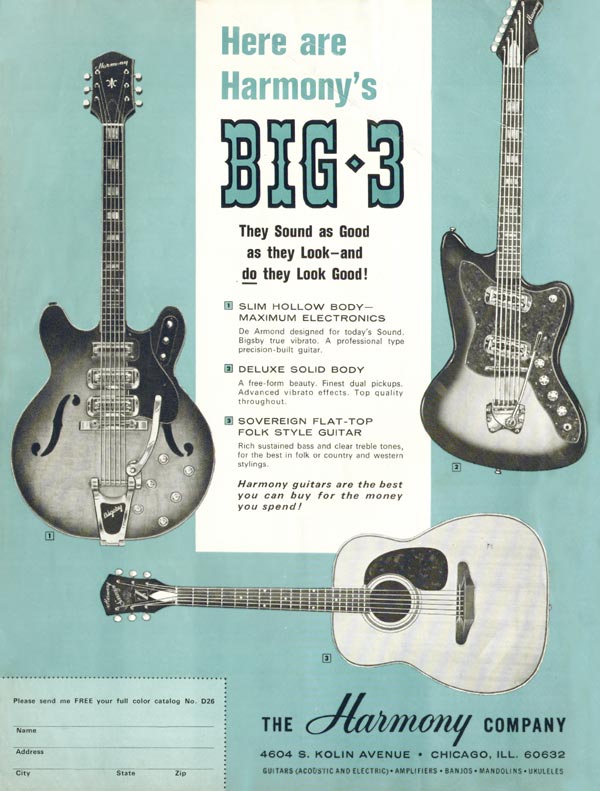Harmony H19 Silhouette - Harmony guitars
Mid sixties Harmony advert, showing a solid-body (H19), an acoustic (1260), and an electric semi-acoustic (H75)
Harmony H19 Silhouette - Harmony Amplifiers - Harmony Electric Guitars
Mid sixties Harmony advertisement for five amplifiers and two guitars; the solidbody H19 and thinline hollowbody H76.
Harmony 1260 - The integrity of the Harmony guitar is known by the integrity of its maker
Mid sixties Harmony adverts for two instruments. The semi-acoustic H-77 and the 1260 acoustic
Harmony H19 Silhouette - Now Hear This
The three instruments appearing in this mid-60s advert are the H19 solid body, H76 thinline hollow-body and the 1260 flat top acoustic. These were Harmony's big-3 instruments and were promoted widely.
Harmony H76 - The Crafstmen Come From Here
In 1967, the American guitar market was under attack. Skilled luthiers at Gibson and Guild were safe, even those these companies had their problems to overcome, but at the lower end, where guitars ...
Harmony H19 Silhouette - Want To Take A Harmony Guitar Apart
Mid sixties advert highlighting some of the features of a Harmony guitar: the slim necks, truss rod, hollow body construction and De Armond pickups. The fact that Harmony was an American company (f...
Harmony 1260 - You plug it in, it turns you on
The title of this advertisement, of course, is a play on Dr. Timothy Leary's 'Turn On, Tune in, Drop out' suggestion, so current amongst the youth of late 1960s America; Harmony new their market. U...

